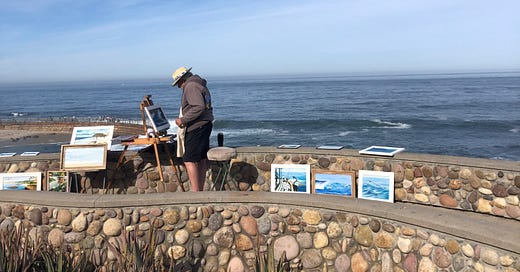I find myself turning to words of wisdom from people who have passed for this reason: their words have stood the test of time. This may be the difference between good and profound advice: good advice is situational, specific, perhaps fleeting in its usefulness, while profound advice is often vaguer and universal, able to be applied to a vaster array of moments and circumstances. Profound advice—wisdom, let’s call it—stands the test of time. It’s still wise decades or centuries later. This kind of wisdom can almost always be useful and applicable, though perhaps more or less so at different points of our lives. The only tattoo I have—“here now”—is one such example. Its message lies dormant on my inner arm, never not true, but is especially poignant at certain moments or periods of life.
This following quote by Viktor Frankl, which I would categorize under “wisdom that stands the test of time”, revisits me every so often, always when I need to hear it. In it, Frankl reminds us where the fulcrum of our power lies. He says:
“Between stimulus and response lies a space. In that space lies our freedom and power to choose a response. In our response lies our growth and our happiness.”
Viktor Frankl, the late Austrian philosopher, psychologist, and a survivor of the Holocaust, among other titles, was no stranger to suffering. One of his notable perspectives, as illuminated in various places of his professional work, was that no matter what, we retain our power to choose our attitudes and responses. In his book Man’s Search For Meaning, Frankl writes this: “Everything can be taken from a man but one thing: the last of the human freedoms—to choose one’s attitude in any given set of circumstances, to choose one’s own way.”
We can only surmise that this perspective—to choose one’s attitude—must have served him in the horrendous circumstances he faced in life.
Regardless of whether we wholeheartedly agree with Frankl’s perspective that we are able to choose our attitude and responses, it is certainly worth considering—if there’s any truth to it, why not put it to work?
Here it is, again: “Between stimulus and response lies a space. In that space lies our freedom and power to choose a response. In our response lies our growth and our happiness.”
A few years ago when I first heard this, I took it more as a life hack, an invitation to control my emotional responses and attitudes. I wanted to respond perfectly, correctly, always in control. As I wrote about earlier this month, I’ve grown up a bit in the last few years, a bit further away from the compulsion toward rigidity and control. When this particular Viktor Frankl quote reentered my consciousness recently, it struck me differently: not as a method of controlling behavior or emotions, but as a tool to alleviate present moment distress and change default, outdated responses.
So often, we react just because it’s how we usually react, or we do the same thing just because it’s what we usually do. We get stuck in mental spirals, or in doomsday thinking, or we jump to extreme conclusions, all because we’re used to it—it’s conditioned, habitual, automatic.
Frankl’s perspective offers us a way out of these default pitfalls in our days and psyches. It tells us that we have the power to recognize the space that already exists between what happened and how we respond. That space presents a choice for us, but if we continue operating out of our default conditioning, we lose access to that choice. We continue reacting in the same ways and engaging in the same patterns—whether we like it or not—because we aren’t aware that there is another way. If many of our reactions emerge unconsciously, then the solution is to become more conscious, more aware.
The space between presents an avenue to more awareness, a way infused with the freedom to choose differently.
I’ve been experimenting with this idea lately, by pausing and turning my attention inward. It’s really working: pausing is inviting me into a place of greater awareness of my conditioned reactions and responses to life, which at times can be uncomfortably anxious and unsettling; not how I want to be living.
As I experiment with the space between, I am discovering that it is not so much about controlling what I’m going to do or say next, but about interrupting impulsive, unhelpful default responses and observing where that impulse is coming from. Many of my unhelpful responses, I am seeing, stem from a fear of the future and a lack of self-trust.
The process of observing that I’m responding or acting from a place of fear is often enough to change it, almost instantly. The space between introduces the ‘oh, wait, that’s not how I want to be’ dialogue in my head—in seeing the fear, I separate from it. I don’t allow it to control my responses.
Maybe for you it’s not about fear (although I bet it is, at least sometimes). Maybe, for you, your default response is to react with anger, or “woe is me” thinking, or “everything sucks”. Whatever it is—remember that there is a space between what’s happening and your response. In that space, there is the freedom to choose; so, become aware of that space. See where that default response is coming from, and see if you like it or not.
If you don’t like what you’re observing within yourself, experiment with changing your response. Interrupt your default patterns by observing the spaces that already exist in the midst of them. Take seriously the idea that within your responses lie your potential for growth and happiness.
The fulcrum of your power lies in the space between, within your reach at any moment. Become more aware of that space.
Maggie




Haven’t read his book in years thanks for posting that